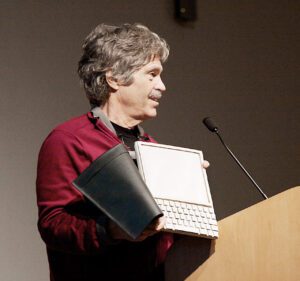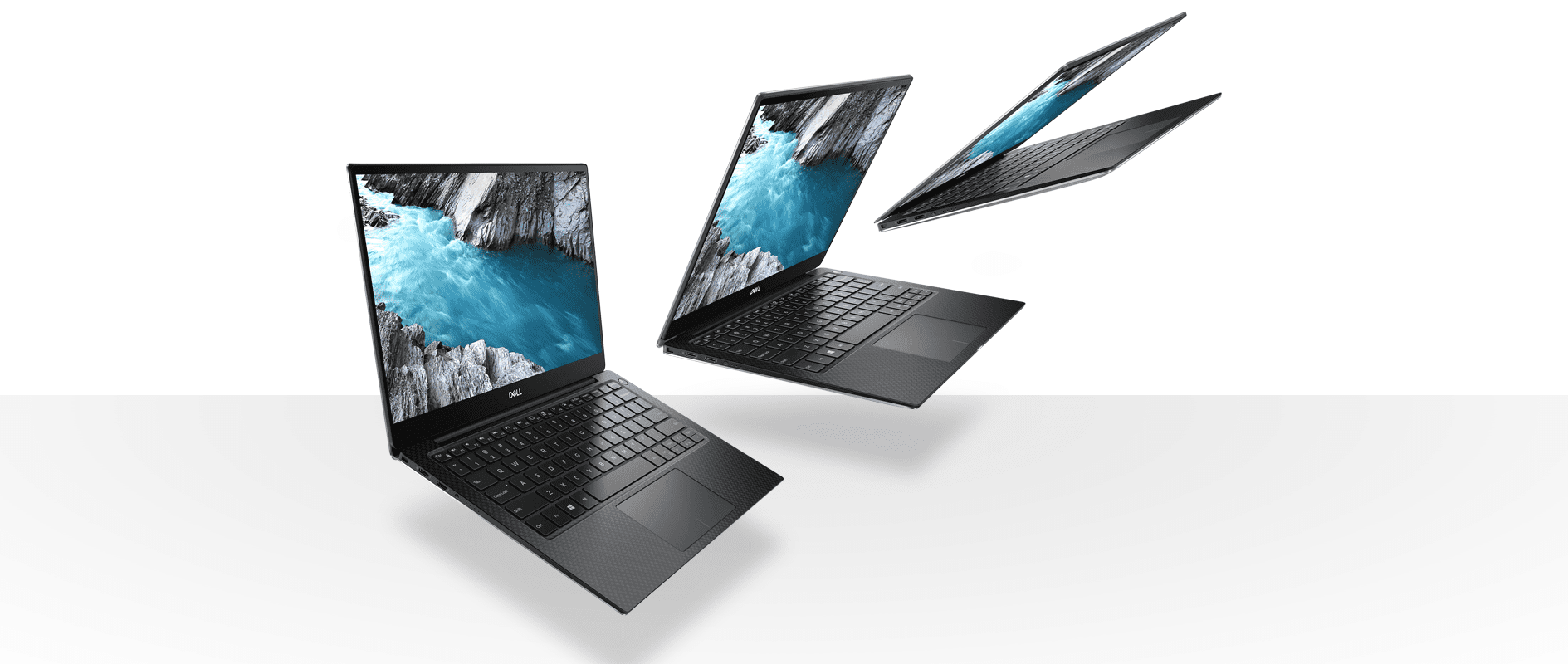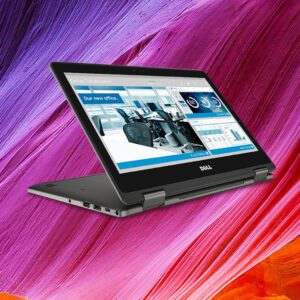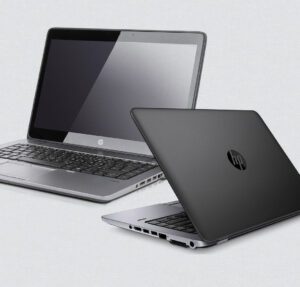Notebook, when and how it was born, what it has become and how it will evolve
Faithful companion of many work categories, the laptop or notebook is now an indispensable object in every field.
The notebook , in its 30 years of evolution, has in fact conquered a place on the desk and in the briefcase of many professionals, resisting the advent of smartphones and tablets that have attempted to usurp its functionality.
Son of the cross between a typewriter and a desktop computer, the laptop soon took its "path", optimizing and perfecting itself over time and for various needs.
But when was the laptop born? Let's rediscover its history, starting from the past and projecting ourselves towards the future.
Birth of the notebook

The history of the notebook is the story of a dream. The dreamer is Alan Kay, the first builder and theoretician of a notebook, the Dynabook, the medium of the dream. The aim of the Dynabook developed by Kay at Xerox's Palo Alto research center (a true hotbed of talent) is to create a device that allows the little ones to become computer literate. A far-sighted dream, which seems to be coming true only now, almost fifty years after its prophecy.
However, the idea does not remain only on paper, but is explored and put into practice by Xerox itself. The fruit of this industrialization is the NoteTaker, a portable computer that remains little more than a prototype, with minimal diffusion also due to its not exactly portable characteristics. In fact, we are talking about a device with a weight of 22 kg for a memory of 256 Kb.
The notebook leaves the laboratory
A little more time and the notebook really starts to make its appearance on the market. The first "truly" produced laptop computer was born in 1981 and was called Osborne I, after its creator Adam Osborne. Also in this case it is the anti-mark Dynabook that is the inspiration. Among the various creators of Osborne I there is in fact Lee Felsenstein, a member of the original Dynabook team. Osborne I is starting to truly become a portable computer, thanks to dimensions equal to those of a typewriter, even if combined with a truly tiny screen. In fact, the Osborne I resembles a toolbox more than a modern laptop, which once opened and placed on its side shows a keyboard housed inside the lid.
It only took a few years for the first real portable computer to appear. We are in 1983 and the first laptop appears on the market with a form factor similar to the current ones. The GriD Compass 1101 in fact comes with 384 Kb of memory and a resolution of 320×200. We are faced with one of the first commercial laptops, in which the biggest obstacle to diffusion is the price. In fact, we are talking about a laptop worth around ten thousand dollars, for a machine that will become almost the sole prerogative of the military and NASA.

The big names enter the field
The first industrial experiment immediately shows the potential of this solution. The major computer brands then began to take an interest in the technology and produce their own version of notebooks. In fact, Toshiba's creations appear (the T1100) and the Kaypro2000. At the end of the 80s Apple also entered the field, first with the Macintosh Portable and then with the Powerbook. In this second version the trackball will appear for the first time.
Microsoft will then contribute to the definitive evolution of the portable computer. It will do so through the launch of Windows 95, which will be the first operating system also designed for the needs of notebooks .
From that moment the evolution will be continuous and will focus on some themes that are also decisive today:
Types of laptops
Although it is a single category of computer, the notebook has differentiated itself based on specific needs over time.
Large laptops 
Not a legacy of the past, but solutions created specifically for specific uses. In fact, we are faced with solutions dedicated to the industrial and military sectors, in which the required characteristics, the number of ports or the need for specific cards do not allow the miniaturization that has occurred for traditional laptops.
Laptop computers
This is the standard laptop, a machine designed to be used on the move and also suitable for "deskless" use. The modern laptop is in fact also perfect for use while standing, on a sofa, during a plane trip and in any place where the space available is not the classic one of an office.
Laptop roaring
Reinforced solutions both in terms of materials and coating. Machines dedicated to heavy-duty uses, such as construction sites, production or military ones. These machines have anti-dust, anti-water and humidity systems and ad hoc protections for the hard disks and delicate parts of the notebook .
Netbooks
Minimal laptops, in which a large part of the computing and storage capacity is delegated to the cloud or the network. The type of netbook is the Chromebook, a portable solution designed for students or for browsing the Internet and cloud services.
The laptop was then a source of inspiration and origin for many other hardware, from tablets with keyboards to PDAs.

What does a notebook contain?
Each notebook is made according to different parameters depending on its intended use. However, if we were to consider the notebook "on paper", we could consider it composed of the following parts:
Everything is enclosed in a plastic, aluminum or magnesium container, the purpose of which is to give resistance to the laptop without weighing it down too much.
 Evolution of the notebook
Evolution of the notebook
Despite being a category "damaged" by increasingly high-performance smartphones and tablets, the interest and evolution in portable computers is still high.
The road to the future seems clear and involves constant lightening combined with an increase in performance, greater functions of the screen which becomes touch and can be rotated 180°. A less tangible but already prophesied future could also see the disappearance of the screen and keyboard, perhaps replaced by interactive projection systems.
With just 40 years of life behind them, there is still an interesting and bright future for notebooks .







